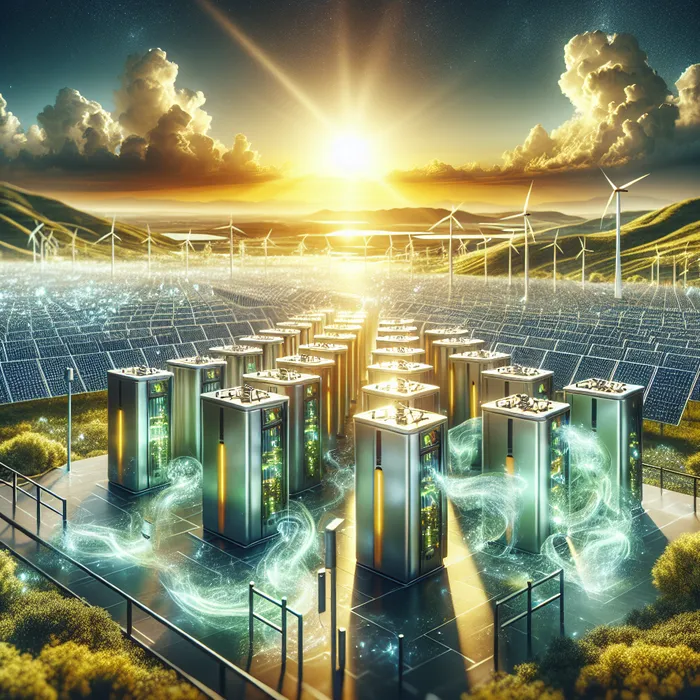Eskom says the BESS programme will fix the electricity crisis. What is it and how does it work?

We break down Eskom's BESS programme and how it works.
Image: IOL
South Africa's power utility, Eskom, is once again highlighting its Battery Energy Storage System (BESS) programme, asserting that its implementation could address the country's ongoing electricity crisis.
But what exactly is this programme, how does it function, and what implications does it have for South Africans?
What are Battery Energy Storage Systems (BESS)?
Imagine a giant, super-smart rechargeable battery that can store electricity and release it exactly when you need it. That, in simpler terms, is a Battery Energy Storage System (BESS).
It's not just an extra gadget; it's a key part of how we manage energy today, especially with renewable sources like solar power. Solar panels are fantastic, but they don't produce electricity when the sun isn't shining. A BESS solves this problem by storing the energy generated during the day for use at night or on cloudy days, making sure you always have a steady power supply.
How does a BESS work?
Now that we have established what a BESS is, we can look into how it works.
1. Collect power: Batteries take in electricity from the main power grid, a power station, or renewable sources like solar panels.
2. Store power: They hold onto this electricity as current.
3. Release power: When needed, they release the stored electricity.
When you add clever computer software to the mix, a BESS becomes an "intelligent platform." This smart system uses things like Artificial Intelligence (AI) to figure out the best times to store and release energy, helping you manage your electricity use more flexibly.
Why are BESS important?
BESS is hailed as a powerful tool to help tackle climate change by making it easier to use renewable energy and reducing carbon emissions. They can also lower energy costs for homes and businesses. They act as a safeguard against power cuts, bad weather, or other issues that might disrupt your electricity supply.
What's Inside a BESS?
- Battery Packs: These are the actual batteries that store the energy.
- Inverters: These change the type of electricity from the batteries (DC) into the type used in homes and by the grid (AC).
- Battery Management System (BMS): This is like the brain of the battery, keeping an eye on its health, charge level, and making sure it operates safely.
- Cooling System: Batteries can get hot, so this system keeps them at a safe temperature.
- Energy Management System (EMS): This smart system looks at energy prices and grid conditions to decide the best time to store or release power, saving money and making the system efficient.
- Safety Systems: These are built-in protections to prevent accidents like fires.
Key advantages of BESS
Reliable Renewable Energy: They make solar and wind power more dependable by storing energy for when it's needed, day or night.
Lower Costs: Store cheaper energy (like free solar) and use it when electricity prices are high, saving you money.
Less Grid Dependency: You're less reliant on the main power grid, getting a continuous supply even when the grid is unstable.
"Always On" Power: No more worrying about the sun setting; your stored energy keeps things running.
Backup Power: Provides essential power during outages, keeping homes running and businesses operational.
Two main types of BESS: Where are they located?
There are two main categories of BESS:
1. "Behind-the-Meter" (BTM) systems: These are smaller systems installed right at your home or business. They help you save money and make your own power supply more stable. Sometimes, if rules allow, they can even send extra power back to the grid.
2. "Front-of-the-Meter" (FTM) Systems: These are much larger systems, usually owned by electricity companies (utilities). They are directly connected to the main power grid and help manage big power flows, like relieving congestion on the network.
How long do they last and what happens afterwards?
Most BESS last between 5 and 15 years. It's important to note that these systems are not just good for the environment, but are also sustainable themselves. This means reusing batteries or recycling their materials at the end of their life. Recovering materials and giving batteries a "second life" helps the environment by reducing the need to dig up new materials and also offers economic benefits.
BESS can easily be added to existing solar power systems. They are particularly effective when combined with solar panels because they can store the solar energy produced during the day for use at night, ensuring a steady power supply around the clock.
IOL
Related Topics: